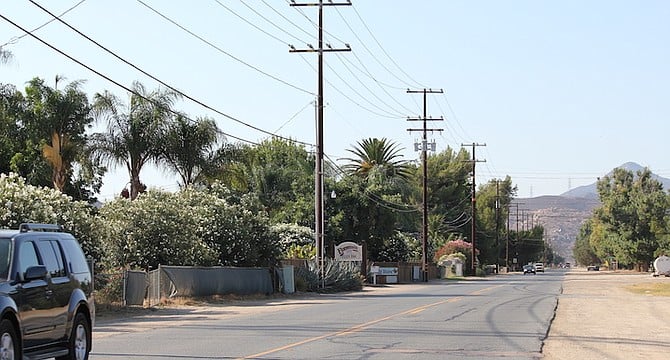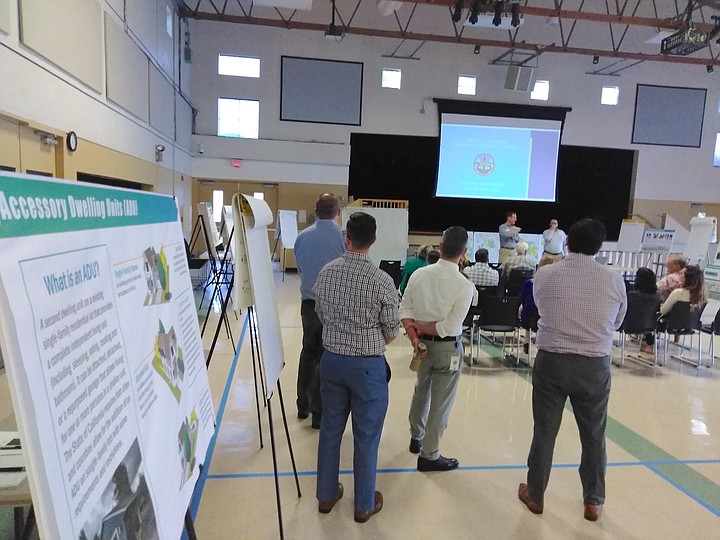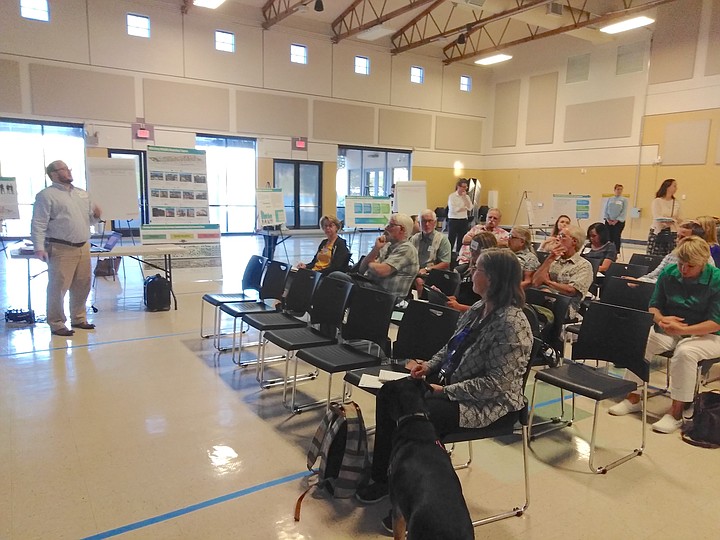 Facebook
Facebook
 X
X
 Instagram
Instagram
 TikTok
TikTok
 Youtube
Youtube

The county board of supervisors has assigned their Planning & Development Services department to look to incorporated areas for housing development. County employees started the tour in August with a workshop at the county building in Kearny Mesa, a session in Valley Center, a recent stop in Lakeside, and another meeting scheduled for September 13 in El Cajon.

Reserving the large room at the Lakeside community center was kind of a wishful thinking; county employees outnumbered the public. Andy Pendeloy from the county presented a grim situation: the average price of a home in San Diego County is $550,000. To afford a $550K home, a family of four would need annual income of $105,000. The median income according to HUD is $81,000.

At the workshop in Lakeside. Pamela Heatherington with the Environmental Center of San Diego said, “The county is already giving up millions of dollars in incentives on housing projects that are already approved without requesting these developers to include affordable housing in their projects.” Heatherington asked the county reps to consider the fact that “the encroachment is subtracting from the environmental sustainability and the quality of life for the people who already live here.”

Jeremy D., who volunteers on the East County Homeless Task Force, pointed out “The County is running out of land to build.”
Beth M. from Lakeside said this plan “should not be a burden on all of us just because some people cannot afford houses in California." John S., another Lakesider, argued that “if placing more resources toward solving the poverty issue falls on us, so be it.” Mary P. from Alpine said, “Property managers discriminate against people using Section 8 vouchers,“ explaining that it’s hard for poor people to be accepted by the community. Beth M. said it was impossible to build a granny flat on her property because of a complicated and expensive permitting process: “I have three contractors right now, and none of them wants to get involved.”
On the other side of the housing crisis issue, the county staff raised up easels and posters to explain possible solutions. People were asked to place colored stickers on the type of houses they see viable in rural, semi-rural and village areas. The single-family homes seemed to be the popular choices; the multiplex got zero stickers.
The county proposes to create a system of transferring credits for construction units. A land owner who only wants to build one family home on a parcel that is zoned for four units, would be able to either sell the remaining (potential) three units credit to the county who will act as a middle man or directly to developers. Nicholle Wright, senior planner, said there will be a cap to the construction projects in order to control population density. People’s written comments mentioned the risk of bypassing the community’s input.
Another popular idea was the mandatory request to include housing for low income in every construction project in the county. Most stickers were placed on the proposed Comprehensive Inclusionary Housing Ordinance that would require “projects of all sizes, above a minimum threshold, to provide 10% units as affordable.”
Mary P. from Alpine wondered, “Why would anybody want to build next to the Cleveland National Forest anyway, when the right question is 'if' not 'when' a fire may destroy your home?”
The community input along with the solutions from Planning & Development Services will be centralized and presented to the board of supervisors this month. The board will meet on October 10 when the public will be allowed to participate and comment.


The county board of supervisors has assigned their Planning & Development Services department to look to incorporated areas for housing development. County employees started the tour in August with a workshop at the county building in Kearny Mesa, a session in Valley Center, a recent stop in Lakeside, and another meeting scheduled for September 13 in El Cajon.

Reserving the large room at the Lakeside community center was kind of a wishful thinking; county employees outnumbered the public. Andy Pendeloy from the county presented a grim situation: the average price of a home in San Diego County is $550,000. To afford a $550K home, a family of four would need annual income of $105,000. The median income according to HUD is $81,000.

At the workshop in Lakeside. Pamela Heatherington with the Environmental Center of San Diego said, “The county is already giving up millions of dollars in incentives on housing projects that are already approved without requesting these developers to include affordable housing in their projects.” Heatherington asked the county reps to consider the fact that “the encroachment is subtracting from the environmental sustainability and the quality of life for the people who already live here.”

Jeremy D., who volunteers on the East County Homeless Task Force, pointed out “The County is running out of land to build.”
Beth M. from Lakeside said this plan “should not be a burden on all of us just because some people cannot afford houses in California." John S., another Lakesider, argued that “if placing more resources toward solving the poverty issue falls on us, so be it.” Mary P. from Alpine said, “Property managers discriminate against people using Section 8 vouchers,“ explaining that it’s hard for poor people to be accepted by the community. Beth M. said it was impossible to build a granny flat on her property because of a complicated and expensive permitting process: “I have three contractors right now, and none of them wants to get involved.”
On the other side of the housing crisis issue, the county staff raised up easels and posters to explain possible solutions. People were asked to place colored stickers on the type of houses they see viable in rural, semi-rural and village areas. The single-family homes seemed to be the popular choices; the multiplex got zero stickers.
The county proposes to create a system of transferring credits for construction units. A land owner who only wants to build one family home on a parcel that is zoned for four units, would be able to either sell the remaining (potential) three units credit to the county who will act as a middle man or directly to developers. Nicholle Wright, senior planner, said there will be a cap to the construction projects in order to control population density. People’s written comments mentioned the risk of bypassing the community’s input.
Another popular idea was the mandatory request to include housing for low income in every construction project in the county. Most stickers were placed on the proposed Comprehensive Inclusionary Housing Ordinance that would require “projects of all sizes, above a minimum threshold, to provide 10% units as affordable.”
Mary P. from Alpine wondered, “Why would anybody want to build next to the Cleveland National Forest anyway, when the right question is 'if' not 'when' a fire may destroy your home?”
The community input along with the solutions from Planning & Development Services will be centralized and presented to the board of supervisors this month. The board will meet on October 10 when the public will be allowed to participate and comment.
Comments